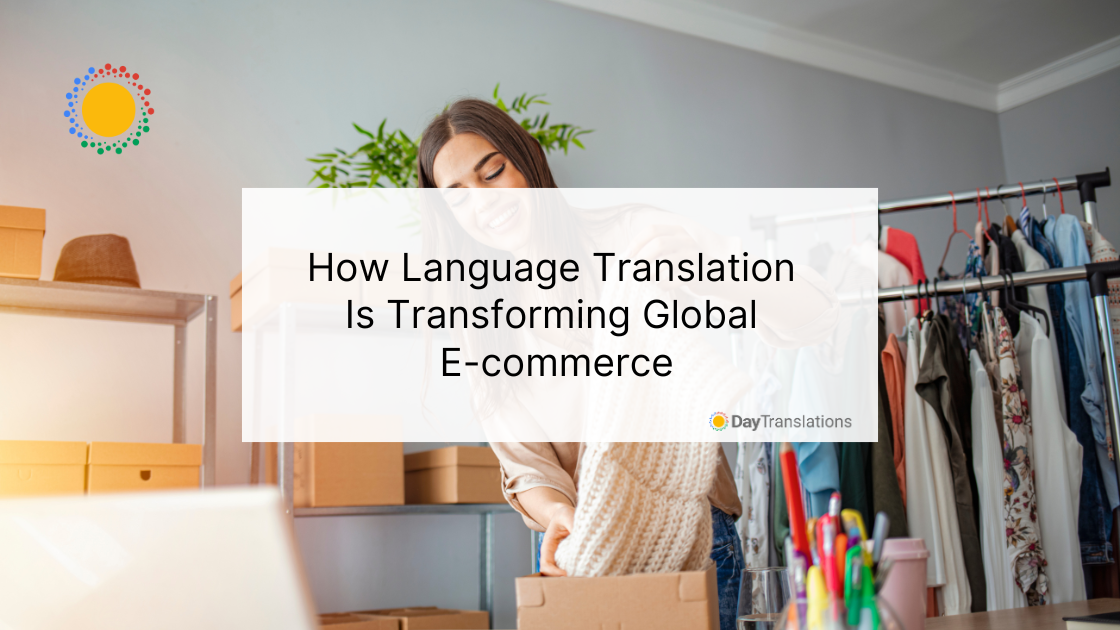Buying and selling goods online is easier than ever before. Thanks to the rise of global e-commerce, people from different parts of the world can shop for clothes, gadgets, and even groceries without leaving their homes. But there’s one major challenge that still exists: language. How can someone in France easily shop on a website from China if they don’t speak the same language? That’s where language translation comes in. In this article, we’ll explore how language translation services transforms global e-commerce and makes it accessible to everyone.
The Importance of Language in Global E-commerce
Imagine you found the perfect item online—maybe a cool new phone or a stylish jacket—but the entire website is in a language you don’t understand. You couldn’t read product descriptions, understand prices, or even complete your purchase. This can be frustrating and is one of the main reasons why language matters so much in e-commerce.
In fact, studies show that most people prefer to shop on websites in their own language. According to a survey, 75% of shoppers are more likely to buy products from websites that provide information in their native language. So, if online stores want to reach more customers around the world, they need to speak their language—literally!
How Language Translation Works in Global E-commerce
Thanks to technology, translating a website into different languages isn’t as difficult as it used to be. There are two main ways that translation can happen in e-commerce:
1. Machine Translation
Machine translation involves using computer software to translate text from one language to another automatically. Google Translate is a popular example of this. Many e-commerce platforms use machine translation to convert their websites into multiple languages quickly. It’s fast, cost-effective, and convenient for businesses looking to expand globally.
However, machine translation isn’t always perfect. It can sometimes misinterpret words or phrases, leading to funny or confusing results. For instance, a simple mistake in translation could turn “fresh bread” into “new bread,” which might sound strange to a shopper.
2. Human Translation
Human translation is when a real person, who is fluent in both languages, translates the text. While this method takes more time and costs more money, it’s often more accurate. Human translators understand cultural differences and can make sure the language sounds natural to native speakers.
Some companies combine machine translation with human editing to get the best of both worlds—speed and accuracy.
Why Accurate Translation Matters
Accurate translation isn’t just about avoiding funny mistakes; it’s crucial for building trust with customers. When shoppers feel confident that they understand what they’re buying, they’re more likely to complete their purchase. Here are a few key reasons why accurate translation is so important in global e-commerce:
1. Clear Product Descriptions
Customers want to know exactly what they’re buying. Accurate translations ensure that product descriptions are clear, detailed, and free from misunderstandings. If a buyer can’t figure out what a product is, they probably won’t buy it.
2. Easy Checkout Process
The checkout process can be complicated, especially if it involves steps like entering shipping information, payment details, and agreeing to terms and conditions. When this information is poorly translated, it can confuse shoppers and lead to abandoned carts. Proper translation ensures that the checkout process is smooth and hassle-free.
3. Cultural Sensitivity
Different cultures have different values and preferences. A word or phrase that works in one country might be offensive or confusing in another. Professional translators understand these cultural differences and can make sure that the language used on a website is appropriate for the target audience.
The Role of AI in Language Translation
Artificial Intelligence (AI) is playing a huge role in improving translation in e-commerce. AI-powered tools, like neural machine translation, use deep learning to provide more accurate translations over time. These tools are constantly learning from millions of translation examples, which helps them improve the quality of translations and reduce errors.
Many e-commerce giants like Amazon and Alibaba use AI-based translation tools to localize their websites for different markets. This allows them to reach more customers and offer a personalized shopping experience, no matter where the shopper is located.
Expanding Business Globally with Language Translation
For businesses, language translation is a game-changer. It allows companies to expand into new markets, attract international customers, and increase sales. Here’s how translation can help businesses grow:
1. Access to New Markets
Without translation, a business is limited to customers who speak its native language. But with translation, a company can enter global markets and reach millions of potential buyers in different countries.
2. Increased Customer Engagement
When a website is available in a customer’s native language, they’re more likely to spend time browsing products, reading reviews, and making purchases. This leads to higher engagement and, ultimately, more sales.
3. Competitive Advantage
In a crowded market, businesses that offer localized experiences have an advantage over those that don’t. Providing language options can help a company stand out from competitors and build stronger relationships with customers.
The Future of Language Translation in Global E-commerce
As technology continues to improve, we can expect even more advancements in language translation. AI-powered tools will become smarter, and real-time translation might become the norm. In the future, shoppers may be able to browse websites, chat with customer service, and complete their purchases in their own language without even realizing a translation is happening.
Language translation is changing the way we shop online. It breaks down barriers, builds trust, and allows businesses to reach customers from every corner of the globe. As e-commerce continues to grow, the importance of accurate, culturally sensitive translation will only increase. For shoppers and businesses alike, the future of global e-commerce is bright—and multilingual!











